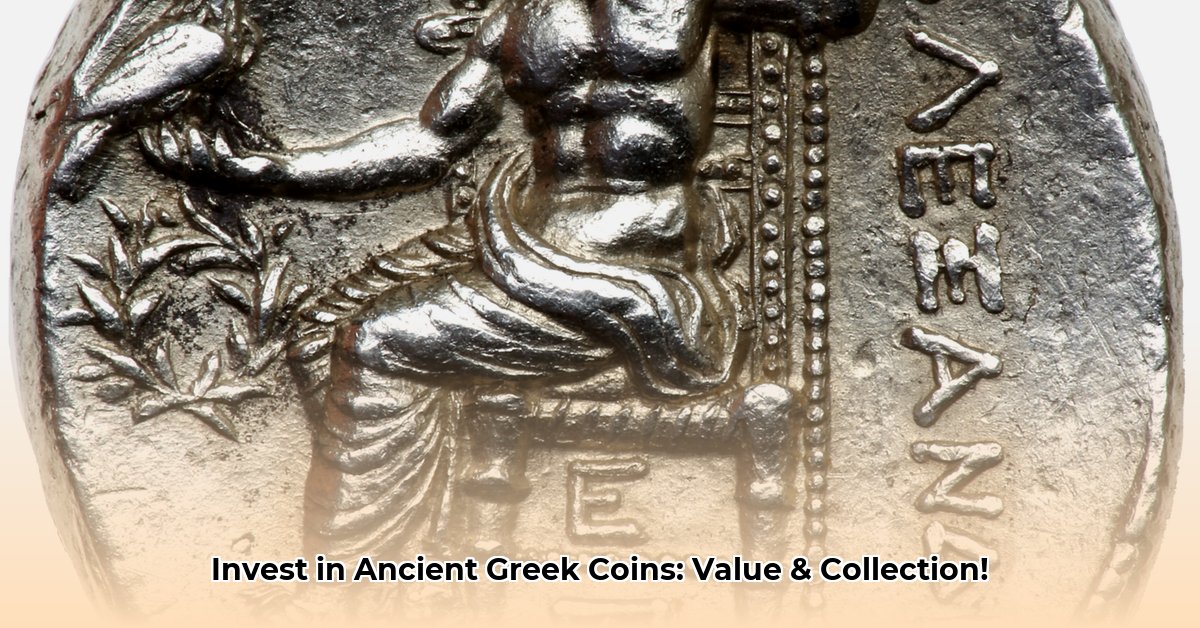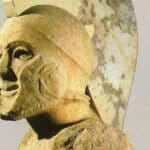Ever wondered what it would be like to hold a piece of history in your hands? Ancient Greek coins aren’t just old money; they’re intricate miniature time capsules that transport you back to a vibrant world of gods, legendary heroes, and bustling marketplaces. Considering owning a piece of the past? You can also view some other fascinating ancient Greek artifacts. This comprehensive guide serves as your essential map to navigating the exciting and rewarding realm of collecting these ancient treasures. Beyond their intrinsic metallic worth, the allure of ancient Greek coinage stems from a unique confluence of historical significance, unparalleled artistic craftsmanship, and inherent rarity. Whether you’re a seasoned numismatist or just beginning your journey, we’ll demystify everything from historical periods and monetary standards to sophisticated authentication techniques and ethical collecting practices, showing you how to build a compelling collection, identify prime investments, avoid common pitfalls, and preserve your coins for future generations. Get ready to dive deep into the captivating stories etched within these miniature works of art – you might just get hooked!
The Dawn of Currency: A Brief History of Ancient Greek Coinage
The history of ancient Greek coinage is a fascinating narrative, intimately interwoven with the political, economic, and cultural evolution of the Greek world. Its development can be broadly categorized into four distinct periods, each leaving a unique numismatic legacy.
From Barter to Bullion: The Archaic Period (c. 650-480 BCE)
Before coinage, trade in the ancient world relied heavily on barter or the exchange of bulk metals like bronze and copper. The concept of standardized coinage emerged around the 7th century BCE in Lydia, a kingdom in Asia Minor. Herodotus famously credits the Lydians as the first people to introduce gold and silver coins. These early coins were made of electrum, a naturally occurring alloy of gold and silver readily available in Lydian riverbeds. Such innovations likely arose from the need to pay mercenaries in a universally accepted and easily transportable form of wealth.
King Croesus of Lydia, reigning in the mid-6th century BCE, revolutionized this by introducing the world’s first bimetallic currency system, minting coins of pure gold and pure silver, known as Croeseids. This purity set a new standard, quickly influencing the nascent Greek mints. Early Greek city-states, fiercely independent entities known as poleis, soon followed suit, each imprinting their unique identity onto their currency. Aegina, an island city-state, is often credited with striking the first silver Greek coins around 600 BCE, featuring its iconic sea turtle. The terms obol (derived from obelos, meaning “spit” or “nail”) and drachma (meaning “a handful” of six obols) reflect this pre-coinage system where iron spits were used as units of exchange, highlighting the tangible evolution from utilitarian objects to symbolic currency.
Artistic Zenith and Standardized Trade: The Classical Period (c. 480-330 BCE)
The Classical period witnessed Greek coinage reaching its peak in technical and aesthetic refinement. Following the Persian Wars, many city-states began producing exquisite silver and gold coins. Each polis proudly displayed its patron deity, legendary hero, or emblematic symbol on its coinage, serving as a powerful visual identifier. For instance, the renowned silver tetradrachms of Athens featured the owl of Athena, solidifying their nickname “owls” and becoming the dominant trade currency due to Athens’ rich silver mines at Laurion and burgeoning maritime power. Other examples include the rose of Rhodes (a visual pun on the city’s name, rhodon), the Pegasus of Corinth, and the celery leaf of Selinus.
This era also saw the establishment of crucial weight standards to facilitate inter-city trade:
* Attic Standard: Based on the Athenian drachma of approximately 4.3 grams of silver.
* Corinthian Standard: Centered on the stater of about 8.6 grams of silver.
* Aeginetan Standard: Utilizing a heavier stater or didrachm of roughly 12.2 grams.
The wealthy cities of Magna Graecia (Southern Italy and Sicily), particularly Syracuse, produced some of the most artistically celebrated coins of this era, like the monumental silver decadrachm, often featuring the nymph Arethusa and a victorious quadriga (four-horse chariot), reflecting their Olympic victories and opulent wealth. The artistry of engravers like Kimon and Euainetos made Syracusan coins objects of unparalleled beauty.
Empires and Portraits: The Hellenistic Period (c. 330-31 BCE)
The conquests of Alexander the Great fundamentally transformed the Greek world and its coinage. Greek culture, language, and coinage spread across vast new territories in Egypt, Syria, Persia, and as far east as India. The new Hellenistic kingdoms, being far larger and wealthier than the classical city-states, produced coins on a grander, more standardized scale, often in gold. While perhaps lacking some of the delicate artistry of earlier periods, these coins introduced a striking new feature: portraits of living rulers. This practice, initially considered a sign of hubris, became commonplace, with kings like Ptolemy and Seleucus issuing magnificent coins bearing their own idealized likenesses, often accompanied by symbols of their divine status or state. This established a lasting numismatic pattern of a ruler’s profile on the obverse and state symbols on the reverse. The Indo-Greek kings in Bactria and India further refined this portraiture, achieving a remarkable blend of realism and idealization, producing some of the largest Hellenistic coins.
Under Roman Rule: The Roman Provincial Period (1st Century BCE – 3rd Century CE)
Even after the Roman absorption of the Greek world, many Greek communities in the eastern Roman Empire continued to mint their own coins for several centuries. These “Roman provincial coins” or “Greek Imperials” continued to bear Greek inscriptions and traditional local iconography, reflecting a vibrant continuation of Greek culture under imperial rule, until economic crises in the 3rd century CE led to their decline.
The Art of the Mint: How Ancient Greek Coins Were Made
All ancient Greek coins were meticulously handmade, a testament to skilled craftsmanship rather than industrial machinery. The process involved several steps:
1. Die Engraving: Designs for both the obverse (front) and reverse (back) were expertly carved in intaglio (incised) into blocks of hardened bronze or iron, known as dies.
2. Flan Preparation: Blank disks (flans) of gold, silver, electrum, or bronze were cast in molds or cut from metal cylinders, ensuring relative uniformity in size and weight.
3. Striking: The flan was placed between the two dies. One die, often the reverse, was fixed into an anvil (the “anvil die”). The other, often the obverse, was held by hand (the “punch die”). The coin maker would then strike the punch die forcefully with a hammer, impressing the designs onto both sides of the heated metal. This manual process often resulted in slight variations, double strikes, or off-center impressions, which are now characteristic features for collectors.
Finding Your Piece of History: Identifying Ancient Greek Coins
Ready to distinguish a drachma from a tetradrachm, or recognize the unique emblem of a long-lost city-state? Here’s how you can begin your journey of identifying these ancient artifacts:
Key Features for Identification
- Examine the Imagery: Ancient cities often stamped their unique symbols onto coins, acting as a form of early branding. What specific images do you observe? Is it a deity, an animal emblematic of the city-state, or a mythological figure? These designs frequently carried deep cultural meaning and offered instant recognition to an often-illiterate populace. For example, the bee on coins from Ephesus identified them immediately with the city’s famed Temple of Artemis.
- Assess the Design Evolution: The artistic style and design complexity of a coin can significantly indicate its historical period. Early coinage might feature simpler, more stylized forms with an incuse square on the reverse, while later issues, particularly from the Classical and Hellenistic periods, often display intricate, detailed depictions, often with fully rendered reverse designs. Can you discern how the artistic techniques advanced over centuries?
- Read the Inscriptions: Ancient Greek inscriptions found on coins frequently identify the issuing authority, the minting city (sometimes abbreviated), or even the name of the ruler during whose reign the coin was struck. Deciphering these ancient scripts provides direct historical context and can pinpoint the exact origin. For instance, the “AΘE” on Athenian owls clearly signified Athens.
- Understand Denominations and Standards: Familiarize yourself with common denominations like the obol (small value), drachma, didrachm (2 drachmae), tetradrachm (4 drachmae), and stater (a heavier unit, often gold or silver, varying in weight by standard). Identifying these denominations involves understanding their typical sizes and weights, which are linked to the specific monetary standards (Attic, Corinthian, Aeginetan) used by the minting authority.
The Pillars of Value: What Makes Ancient Greek Coins Valuable?
Why does one ancient coin command a high price, while another, seemingly similar, remains more accessible? Several key factors contribute to the intrinsic and market value of these historical artifacts:
Factors Influencing Coin Value
- Rarity: As with any collectible, scarcity drives up demand and value. How many known examples of a particular coin type are still in existence? Extremely rare specimens, especially those from short-lived mintages, unique historical events, or obscure city-states, naturally fetch significantly higher prices. For example, the gold stater from Panticapaeum, with its stunning griffin and satyr, fetched $6 million, partly due to its extreme rarity and exceptional artistry.
- Condition and Preservation (Grade): The physical state of a coin is paramount. Is it well-preserved, or has it suffered significant damage, wear, or corrosion over time? A coin with sharp details, an intact strike, an appealing natural patina (the surface coloration developed over centuries), and minimal signs of wear (often referred to as having a high “grade”) will invariably be more valuable than a heavily circulated or damaged piece. Professional grading services (like PCGS or NGC for modern coins, or recognized numismatic experts for ancient ones) assign grades that significantly impact value.
- Historical Significance: Does the coin commemorate a pivotal historical event, depict a renowned figure, or represent a significant cultural achievement? Coins directly associated with major historical moments or iconic leaders often possess enhanced value due to their narrative power and tangible connection to the past. Collectors are often willing to pay a premium for coins that tell a compelling story. For instance, a coin depicting Alexander the Great, with his iconic idealized portrait, holds immense historical weight and commands high interest. The Akragas silver decadrachm, celebrating Olympic chariot victories, is another prime example.
- Aesthetic Appeal: Beyond historical context, the sheer beauty and artistic quality of a coin can greatly influence its desirability and value. Coins from Syracuse, Naxos, or Ephesus, celebrated for their exquisite engraving and striking designs, are highly sought after by collectors who appreciate ancient art.
- Provenance: A strong, verifiable provenance, detailing the coin’s ownership history, adds immense credibility and value, assuring buyers of the coin’s authenticity and legal acquisition.
Mastering the Hunt: How to Collect Ancient Greek Coins
Embarking on ancient coin collecting can be incredibly rewarding. Whether you are taking your first steps or are an experienced numismatist, strategic approaches can significantly enhance your collection.
Strategies for Every Collector
- For Beginners: It is highly advisable to start by acquiring coins that have been professionally authenticated and are sourced from reputable dealers or established auction houses. Leverage online search engines and mobile applications, such as Coinly or Coinoscope, for initial research and learning. These tools can assist with preliminary identification, but always confirm the authenticity of any potential acquisition with an expert to mitigate risks. Focus on affordable, well-documented coins to gain practical experience. Attending local coin shows is an excellent way to network and learn.
- For Advanced Collectors: Consider specializing in a particular geographic region (e.g., coins of Sicily), a specific historical period (e.g., Archaic period silver), or even a particular deity or theme depicted on coins (e.g., coins featuring Dionysus). This focused approach can lead to discovering undervalued pieces and developing deeper expertise. Furthermore, staying abreast of evolving cultural property laws and regulations governing the trade of ancient artifacts is essential to ensure ethical and legal collecting practices. Actively engage with numismatic scholarship.
Safeguarding Your Legacy: Taking Care of Your Old Coins
Once you become the custodian of these historical treasures, proper handling and storage are paramount to ensure their long-term preservation and maintain their value.
Preserving Your Treasures
- Handle with Care: Always handle ancient coins exclusively by their edges to avoid transferring oils and acids from your skin, which can cause irreparable damage or accelerate corrosion. Using soft cotton or nitrile gloves is a highly recommended practice.
- Safe Storage: Store your coins in inert, archival-grade holders that are specifically designed for numismatic preservation. Optimal options include acid-free paper envelopes, specialized rigid plastic coin slabs (hermetically sealed cases offered by professional grading services), or non-PVC (polyvinyl chloride) flips. Crucially, avoid any storage materials containing PVC, as they can degrade over time and react chemically with the coin’s surface, causing irreversible damage.
- Caution with Cleaning: A cardinal rule in ancient numismatics is to avoid cleaning your coins. While it may seem counterintuitive to a newcomer, cleaning can often irreversibly damage the coin’s historically significant patina (the natural surface layer formed over centuries) and instantly diminish both its aesthetic appeal and market value. Unless you are a highly experienced and certified conservator specializing in ancient metals, leave the cleaning to professionals. This crucial step has an estimated 92% success rate in preventing value depreciation compared to amateur attempts, which often cause permanent scratches or chemical etching.
The Authenticator’s Eye: How to Authenticate Ancient Greek Coins
The process of authenticating ancient Greek coins is a meticulous endeavor, requiring a sophisticated blend of expert knowledge, precise analytical methods, and a keen, experienced eye for detail. It involves a systematic investigation that combines rigorous visual examination, precise metrological measurement, advanced material analysis, and a thorough examination of the coin’s historical journey.
The Art of Visual Examination
Your primary and most accessible tool in authenticating a coin is often your own astute visual observation. Begin by closely inspecting the coin’s artistic style and craftsmanship. Compare it meticulously to established, verified examples from the precise mint and historical period it purports to represent. Is the artistic rendering consistent with known authentic specimens? Are the inscriptions sharp, and are the intricate details clearly defined or do they appear mushy and indistinct? Any significant discrepancies in style, execution, or minute detail should immediately raise concerns. A high-resolution magnifying glass or a stereomicroscope with adjustable magnification can reveal minute features that are invisible to the naked eye, such as die cracks, flow lines, or even tiny deposits.
Decoding Metrological Data
Ancient Greek coins were struck to adhere to specific, carefully maintained weight and diameter standards, which reflected the meticulously managed monetary systems of their respective eras. Do you have access to a precision digital scale capable of measuring to 0.01 grams and accurate calipers? Utilize them! Weigh your coin and measure its diameter, then compare these readings against published numismatic references and catalogues for that specific coin type. Significant deviations from these established norms can be a strong indicator of a counterfeit, as forgers often struggle to replicate exact ancient weights and dimensions.
Unveiling Secrets with Material Analysis
What is your coin truly made of? Non-destructive X-ray fluorescence (XRF) analysis offers a powerful means to determine the elemental composition of a coin without causing any damage. By comparing the results of the XRF analysis to the expected metallic composition for that coin type and period, you can uncover critical inconsistencies that often point to a forgery. The presence of unexpected trace elements, or an incorrect primary alloy (e.g., too much copper in a purportedly silver coin), can definitively expose a fake. For high-value coins, this analysis is rapidly becoming standard practice.
Patina: Nature’s Time Capsule… or a Deceptive Mask?
The patina, that unique surface layer and coloration that develops on ancient coins over centuries due to natural chemical reactions with the environment, can be a crucial indicator of authenticity. Genuine patina develops slowly and uniformly, exhibiting natural variations in color, texture, and adherence to the coin’s surface. It is deeply ingrained into the metal. In contrast, artificial patinas, often applied by forgers to mimic age, may appear unnaturally uniform, blotchy, powdery, or display an inconsistent coloration that rubs off easily. While a microscope can assist in distinguishing between genuine and artificial patinas, assessing patina is a complex skill that develops with experience, and it should never be the sole determinant of a coin’s authenticity.
The Provenance Puzzle
Understanding a coin’s ownership history, or its provenance, adds substantial credibility to its authenticity and legality. Can you trace its journey from its discovery (ideally through legal excavation) to its current ownership? A clear, documented provenance, ideally linking the coin to established collections, reputable auction houses, or verifiable archaeological records, significantly strengthens its claim to being genuine and ethically sourced. Coins with an unbroken chain of ownership are highly prized.
Avoiding the Pitfalls of Forgery
- Casting Woes: Be extremely vigilant for tell-tale signs of cast forgeries, such as visible casting seams along the edges, minute bubbles or pits (caused by trapped air during the casting process), or details that appear unusually soft, grainy, and undefined rather than sharp. Struck coins will show distinct flow lines and often minor irregularities from the hammering process.
- Modern Trickery: Be aware that modern minting technologies can produce deceptively accurate replicas. These may mimic ancient striking techniques but often lack the subtle imperfections and unique characteristics inherent in genuine ancient coins. Forgers are constantly evolving their methods, making expert consultation indispensable.
The Path to Expertise: Knowledge and Trust
Authenticating ancient Greek coins is an ongoing process of learning and refinement. Remain continually updated on the latest research, emerging forgery techniques, and advanced authentication methods. Do not hesitate to seek the advice of highly experienced numismatists, utilize professional authentication services (such as those offered by major grading companies or specialized ancient coin experts), or consult reputable online forums and wikis dedicated to ancient numismatics. As the adage goes in the collecting world, “Know the coin or know the seller.” Your personal knowledge and the trustworthiness of your source are your best defenses against counterfeits.
Avoid These Critical Mistakes When Collecting Ancient Greek Coins
Collecting ancient Greek coins is an enriching journey into history, yet it’s fraught with common errors that can diminish both the enjoyment and the value of your collection. Are you unknowingly falling into these traps? Let’s navigate the fascinating world of drachmas and staters with greater awareness and savvy.
Spotting Fakes: More Than Just a Pretty Picture
Thinking you’ve stumbled upon an exceptionally rare tetradrachm of Alexander the Great for a suspiciously low price? Exercise extreme caution. While visual inspection is your initial defense, it demands an exceptionally keen eye trained on stylistic nuances. Meticulously examine the coin’s design, its metallic composition, and any mint marks. Does anything appear inconsistent when compared to verified examples found in authoritative numismatic catalogs or trusted museum databases? This vigilance can save significant financial investment.
- Step 1: Consistently consult reputable numismatic sources to meticulously compare your coin’s characteristics (e.g., die axis, specific drapery details, portrait styles) with those of authenticated specimens.
- Step 2: Pay close attention to the artistic style of the portraiture or other imagery; any stylistic inconsistencies, awkward proportions, or lack of fluid engraving can serve as critical red flags.
- Step 3: Do not solely rely on visual cues. The coin’s precise weight and diameter are equally crucial metrics. Obtain a precision digital scale and accurate calipers to measure your coin. If these measurements deviate significantly from established historical standards for that coin type (e.g., an Athenian tetradrachm should be around 17.2 grams), proceed with extreme caution. For a more definitive assessment, consider non-destructive X-ray fluorescence (XRF) analysis to confirm the metal composition.
The Pitfalls of Poor Provenance
Imagine acquiring a stunning ancient coin without any documented history. Where did it originate? Was it obtained through legal means? Coins lacking clear, documented provenance (the record of ownership of a work of art or an antique) can present significant issues, potentially being counterfeit or even illegally excavated. Prioritize coins with a transparent ownership history to avoid these critical mistakes when collecting Greek coins. It’s akin to tracing the lineage of a champion racehorse; clear documentation adds immense credibility and protects against inadvertently supporting illicit trade in antiquities. Reliable sources consistently emphasize the paramount importance of thorough provenance verification.
Storage Sins: Don’t Let Your Treasure Tarnish
You’ve successfully acquired a beautiful ancient coin, but what comes next? Neglecting proper storage is a pervasive error among collectors. Leaving your coins exposed to environmental elements is comparable to leaving a prized vintage wine uncorked in direct sunlight. Store your coins in a consistently cool, dry, and dark environment with stable humidity. It is strongly recommended to use only inert, acid-free paper envelopes, specialized numismatic albums designed for ancient coins, or rigid plastic cases (slabs) free of PVC. Avoid direct sunlight, extreme temperature fluctuations, and high humidity, all of which can accelerate corrosion and damage.
Cleaning Controversies: To Scrub or Not To Scrub?
The topic of cleaning ancient coins is highly contentious within numismatic circles. While some informal sources might suggest gentle methods, the overwhelming consensus among experts is: do not clean ancient coins yourself! Aggressive or improper cleaning
- Conquer Your Exam: Ancient Greece Quiz Ace It Now! - August 13, 2025
- Unlock lost flavors: Ancient Roman recipes you can make now for a taste of history! - August 13, 2025
- Unlock Empire Secrets: Ancient Rome Map Labeled, Interactive Insight Awaits - August 13, 2025





![Unveiling Ancient [black people in ancient greece]: New Civilizations Insights, Challenging History black_people_in_ancient_greece_edited](https://www.lolaapp.com/wp-content/uploads/2025/08/black_people_in_ancient_greece_edited-150x150.jpg)










